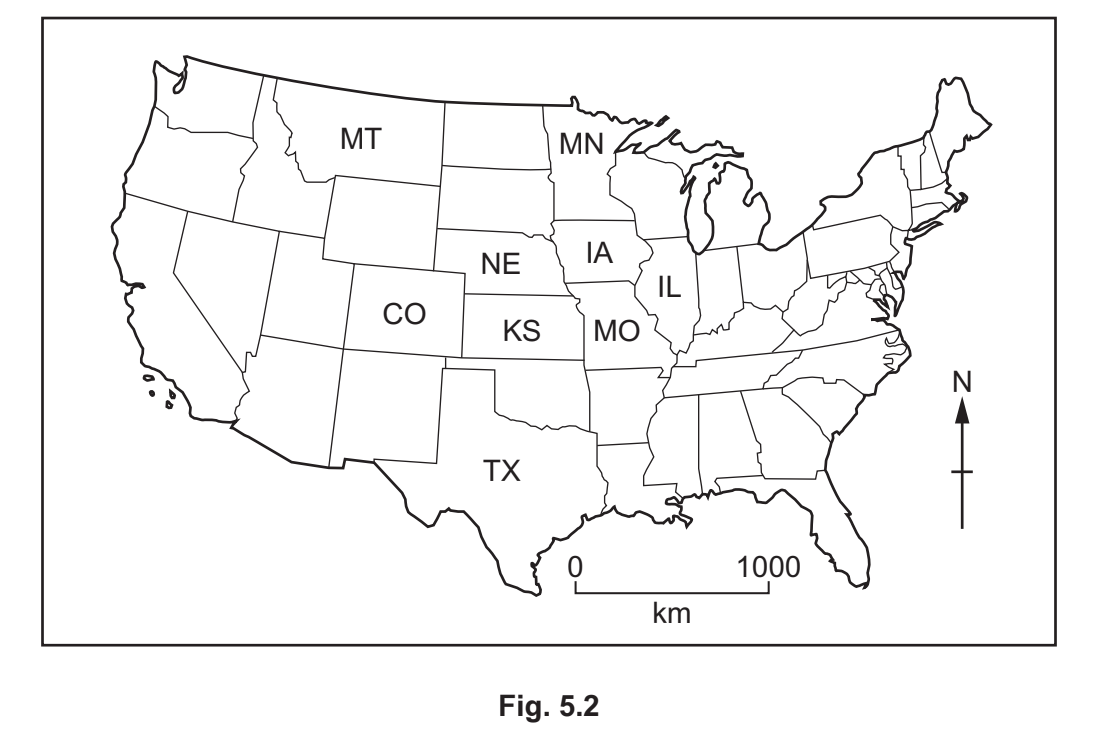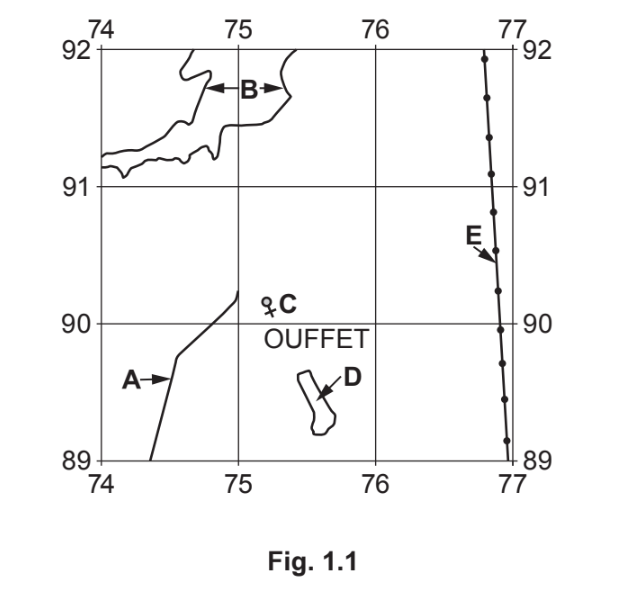Study the map extract for Misterbianco, Italy. The scale is 1:50000.

Using the map extract, identify the following features shown in Fig. 1.1:
[1]
[1]
[1]
[1]
[1]

The table below compares the features of the two areas. Complete the table by putting ticks in the correct six boxes. Use only one tick (3) for each row.
| Feature | Area A | Area B | Both these areas |
Neither of these areas |
| river flowing from south to north | ||||
| meandering river | ||||
| river flowing from north to south | ||||
| either flat or gently sloping | ||||
| steep slopes | ||||
| plateau |

[1]
[1]
[1]

Identify:
[1]
[1]
Did this page help you?
































